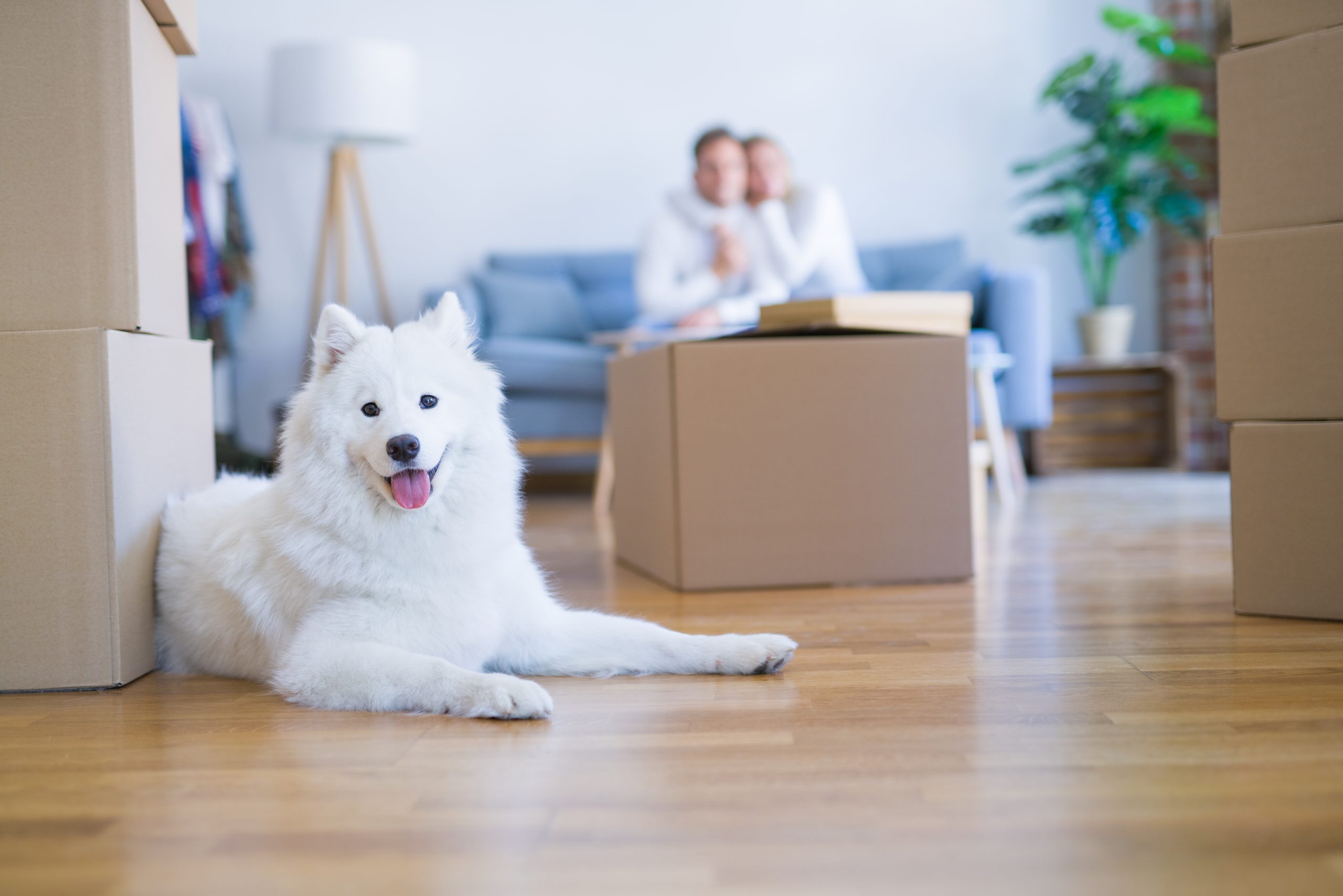Moving With Pets

Most pet owners love their pets and see them as members of the family. So of course, people bring their pets with them when they move to a new home. Pets thrive in a stable environment and the disruption of moving can cause distress. Thankfully the experts at Big John’s Moving have compiled some advice for moving with pets to a new home in the most stress-free way possible for you and your furry family members.
Pre-Move Preparation
Pack gradually
Start leaving boxes and packing supplies around your old home weeks before the move and start gradually packing your possessions. Gradual changes to your pet’s environment will be less stressful than sudden changes. At first, your pet may be curious or nervous about packing supplies but over time they will get used to their presence.
Maintain your pet’s routine
Feed, walk, and play with your pet at the same times as usual. Dogs, cats, and other pets are creatures of habit and sudden changes to their schedule can cause unnecessary stress.
Give your pet more attention
Moving even under the best circumstances is stressful for animals so it is important to give them more attention than usual. For instance, take your dog for a longer walk to tire them out and burn off some of their anxious energy.
Set aside quiet space for them
Consider setting aside some small portion of your home for your pet and keeping it clear of the clutter and chaos that will consume the rest of your home as you are packing your belongings.
Contact your veterinarian
Call your veterinarian and ask them what stress-relieving techniques and supplements they recommend. If you are moving far from your current home and are switching veterinarians schedule a last appointment to make sure your pet is healthy and up to date on vaccinations. You should also refill any prescriptions for your pets and request a copy of your their medical files.
Acclimate your pet to their travel accommodations
If your pet is not used to long car rides or being confined to a pet carrier get them ready by taking them on practice drives. You can also use positive reinforcement methods like treats and toys to get your pet to have a positive reaction to their carrier and the car.
Never abandon your pet
You should never under any circumstances leave your pet behind or release them into the wild. If you are for any reason unable to take your pets with you to your new home it is your responsibility to find them a home or surrender them to a shelter. Abandoning your pet on the street can result in their death. Abandoning your pets is illegal and immoral.
Moving Day
Pack an emergency bag for your pet
The night before you move pack a bag with your pet’s essentials including food, medicine, water bowls, kitty litter, poopie bags, treats, grooming tools, and any other supplies they may need during the move or immediately after arrival at your new home.
Keep your pet away from the action
On moving day it is best to keep your pet away from the chaos. Consider having the animal stay in one quiet room with the door closed or even in a kennel or friend’s house until it is time for you and your family to leave. Be sure to keep your pet somewhere that is secure, so they do not run away. Check on them regularly.
Take your pet in the vehicle with you
When moving with pets, always take them to their new home with you in your vehicle. The safest place for your pet is to be secured in their carrier, in the backseat of your car. Make sure there are no loose bags or boxes that can fall on them. You can also put a blanket over their carrier to reduce stress during the move.
Fish, birds, reptiles, and rodents.
Fish are particularly vulnerable to stress and moving can be dangerous for them. Fish can be transported for short distances using plastic bags filled with their old aquarium water. However, if you are moving a long distance (like to a new town, city, or state) you may want to consider rehoming your fish, to avoid accidentally killing them. Birds and rodents can be moved in their usual home containers but these containers should be covered to regulate temperature and reduce stress. Reptiles should be transported in an insulated box with plenty of air holes and a damp cloth inside for moisture. All of these animals should be transported safely by buckling them in the backseat of your vehicle, just like a dog or cat.
Make sure you have pet-friendly accommodations
If you are traveling a long distance and will need to stay in a hotel overnight, make sure to find a pet-friendly hotel ahead of time along your route.
Pets In Your New Home
Pet-proof your new home
Do not just release your pet into your new home. First, make sure the house is safe by ensuring that all doors, windows, vents, balconies, toilets, and backyard fences are secure. You should also search the home and remove rodenticides, poisonous houseplants, and any other pet dangers that may have been left behind by the previous residents.
Introduce pets to the new home slowly
Get your pet used to your new home gradually by starting them off in a single quiet room, and gradually expanding the areas of the house to which they have access over time as you unpack.
Update their tags
Update the collar tags and microchips of your dogs and cats with your new address and contact information as soon as possible after a move (if not shortly before it). Ten million pets go missing in the USA every year, please make sure your pet is prepared.
Reestablish routine
Reestablish a predictable routine for your pet as soon as possible by walking, feeding, grooming, and playing with them at set times of day preferably the same times they were used to at your old house.
Big John’s Moving Makes Moving With Pets Easy
Moving with pets can make the process more of a hassle but with these tips, you and your pets can have a much more enjoyable moving experience. If you are planning a move in the near future please contact Big John’s Moving so that we can help you plan a stress-free move for you and your pets.


